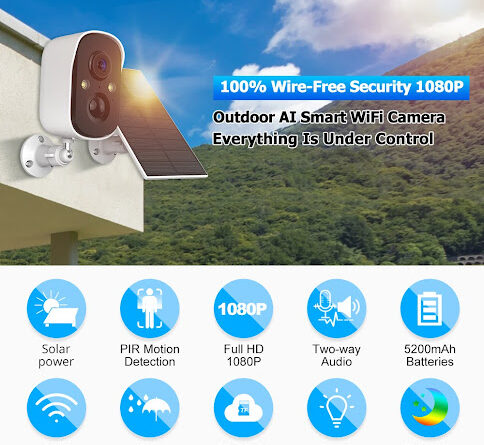Unlocking the Potential: The Evolution of Wireless Security Cameras
In today’s rapidly advancing technological landscape, wireless security cameras have emerged as indispensable tools in the realm of surveillance and monitoring. These cutting-edge devices leverage wireless technology to provide seamless connectivity and unparalleled convenience, revolutionizing the way we safeguard our homes, businesses, and communities.
Introduction to Wireless Security Cameras
Wireless security cameras, also known as Wi-Fi cameras, are sophisticated surveillance devices that operate without the need for cumbersome cables or wiring. Instead, they utilize wireless networks, such as Wi-Fi, to transmit video and audio data to a designated receiver or cloud-based storage system. This innovative approach offers users greater flexibility and mobility, allowing them to install cameras in virtually any location without the constraints of traditional wired systems.
Key Technological Features
One of the primary features of wireless security cameras is their ability to connect to existing Wi-Fi networks, enabling remote access and control via smartphones, tablets, or computers. This facilitates real-time monitoring from anywhere with an internet connection, empowering users to keep a watchful eye on their property at all times.
Moreover, wireless security cameras come in a variety of form factors to suit different applications, including indoor, outdoor, and panoramic models. Whether you’re monitoring your living room, securing your backyard, or overseeing a large commercial space, there’s a wireless camera solution tailored to your needs.
Applications Across Industries
The versatility of wireless security cameras makes them invaluable assets across a wide range of industries and settings. In residential settings, these cameras provide homeowners with peace of mind by deterring intruders, monitoring children and pets, and capturing evidence of suspicious activity. Similarly, businesses utilize wireless cameras to protect assets, enhance workplace safety, and mitigate liability risks.
Furthermore, wireless security cameras play a pivotal role in the development of smart cities, where they contribute to public safety initiatives, traffic management systems, and environmental monitoring efforts. By deploying wireless cameras strategically throughout urban environments, authorities can gather valuable data and respond swiftly to emerging threats or incidents.
Security and Privacy Considerations
While wireless security cameras offer numerous benefits, they also raise concerns about security and privacy. As with any internet-connected device, there’s a risk of unauthorized access or hacking, potentially compromising sensitive information or invading privacy. To address these issues, it’s essential for users to implement robust security measures, such as encryption protocols, strong passwords, and regular software updates.
Moreover, users should be mindful of privacy considerations when deploying wireless cameras in residential or public spaces. By respecting individuals’ privacy rights and adhering to relevant regulations, users can enjoy the benefits of wireless surveillance without infringing on others’ personal freedoms.
Future Developments and Integration
Looking ahead, the future of wireless security cameras is brimming with promise. Advancements in technology, such as higher resolution imaging, artificial intelligence, and edge computing, promise to enhance the capabilities of wireless cameras, making them even more powerful and versatile.
Furthermore, the integration of wireless security cameras with other smart devices and systems, such as home automation platforms, voice assistants, and machine learning algorithms, will unlock new possibilities for seamless integration and intelligent automation. By harnessing the full potential of wireless technology, security cameras will continue to evolve and adapt to meet the evolving needs of users in an increasingly interconnected world.
In conclusion, wireless security cameras represent a paradigm shift in surveillance technology, offering unparalleled convenience, flexibility, and functionality. With their wide-ranging applications, robust features, and ongoing innovation, these devices are poised to shape the future of security and monitoring for years to come.




